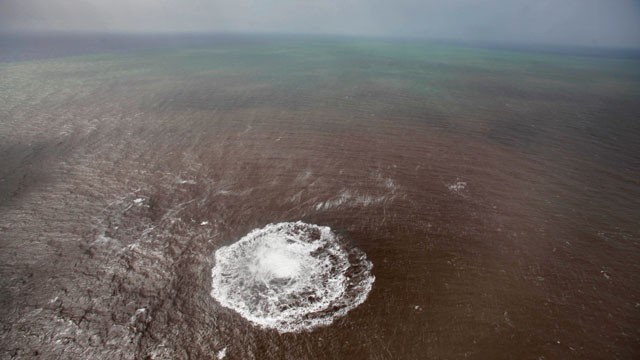Canary Islands Eruption: Undersea Volcano Now Just 70 Meters from Surface

In the Atlantic Ocean, off the Canary Island of El Hierro, 20-meter high jets of water are being spat into the air as the sea boils amid the stench of sulfur. The undersea volcano, which is set to create new land, is growing ever-nearer to the surface -- but is the existing island at risk from the explosive eruptions?
"The monster rises out of the water", screamed the Spanish newspaper La Provincia. Scientists, meanwhile, are being a bit more level-headed about the undersea volcano south of El Hierro in the Canary Islands; they now believe it is in the third phase of its eruption -- fountains of water have been shooting out of the Atlantic up to 20 meters in the air over the last few days. On Tuesday, some local residents even saw stones being catapulted out of the sea.
A seething maelstrom, dozens of meters across, is bubbling away in the ocean. Measurements show that the vortices are significantly warmer than the surrounding water.
So far, the volcano has only shown its explosive power beneath the water. But now the outbursts to the south of El Hierro are frothing up the surface, as if the ocean had hiccups. The lava is piling up on an underwater mountain. That the eruption is capable of firing jets of water into the air shows that this mountain is growing -- the center of the eruption is approaching the surface. Geologists believe that new land could soon emerge from the sea, and islanders are already looking for a name for the new territory. There are only 70 meters to go until the mountain reaches the surface, experts from Spain's National Geographic Institute (IGN) have reported.
Desiree Martin/AFP/Getty Images
Aerial view taken, Oct. 17, 2011 of a green... View Full Size
But how big is the risk to nearby residents? Last weekend, hundreds of people had to leave their homes in the southern part of El Hierro as streets were closed. And locals can quite literally smell the danger -- stinking sulfur fumes are drifting across the ocean. The Volcanology Institute of the Canaries, Involcan, has reported a three-fold increase in carbon dioxide levels -- a warning signal that further volcanic activity can be expected.
Clear Sign of Impending Eruptions Seismic disturbances on the seabed have also been spreading. Since July, more than 10,000 minor earthquakes have shaken El Hierro, but since Oct. 22, the tremors have become increasingly stronger with some even surpassing four on the Richter scale. The quakes are showing a pattern typical of flowing magma, the so-called harmonic volcanic tremor -- a clear sign of impending eruptions.
And scientists have been warning since September that if and when those eruptions do occur, they could well happen on land. In recent days, the tremors have shifted from the south to the north of El Hierro. Because most of the quakes there had occurred at a depth of ten kilometers or greater, there was probably no immediate risk of an eruption in the area, the local authorities had said. The magma had been confined to the deep.
But it has now started moving upwards -- the most recent earthquakes have been shallower.
There could soon be eruptions in or near the El Golfo valley on the northern coast, the IGN has warned. And an outpouring of lava could prove dangerous not only if it happens on land, but also in shallow water, where it could result in large steam explosions, says Ramon Ortiz, scientific adviser to the local government. Hot Spot Volcanoes

No comments:
Post a Comment